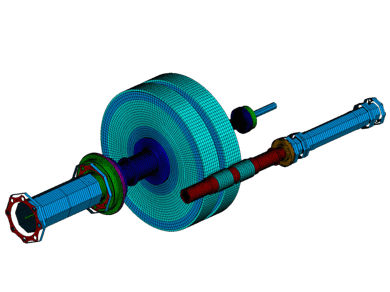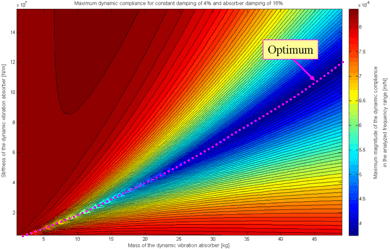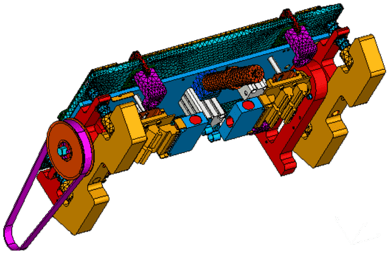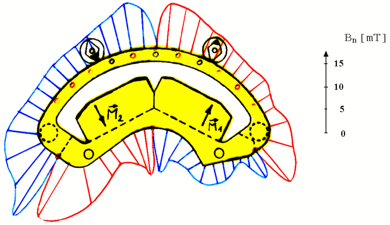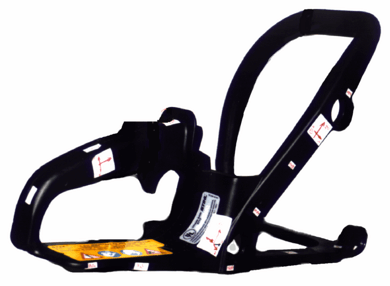Content
Professional measurement services for your project
Content
Are unexpectedly high vibration amplitudes occurring on your machines or products? Do you want to avoid the resulting wear and damage, increase comfort and reduce noise? Benefit from our more than 25 years of experience in projects for mechanical engineering, the automotive industry, aerospace, plant engineering, electrical engineering, and medical technology. We are your reliable and competent partner for vibration measurements in Germany and worldwide.
Our experienced engineers use state-of-the-art measurement technology to carry out vibration measurements that are precisely tailored to your product and your task. We attach particular importance to a detailed and targeted analysis of the recorded measurement data. Based on the findings of the vibration tests, we develop design proposals for the targeted optimization of your products and processes. You too can benefit from our many years of experience with vibration measurements and FEA analyses.
ISMB offers you a wide range of different services relating to the experimental investigation of the vibration behavior of your products. In order to meet the high demands of our customers, each project receives a procedure tailored to the individual task. In this way, we guarantee optimum results and maximum customer satisfaction.
Our experienced engineers use state-of-the-art measurement technology to carry out vibration measurements that are precisely tailored to your product and your task. We attach particular importance to a detailed and targeted analysis of the recorded measurement data. Based on the findings of the vibration tests, we develop design proposals for the targeted optimization of your products and processes. You too can benefit from our many years of experience with vibration measurements and FEA analyses.
ISMB offers you a wide range of different services relating to the experimental investigation of the vibration behavior of your products. In order to meet the high demands of our customers, each project receives a procedure tailored to the individual task. In this way, we guarantee optimum results and maximum customer satisfaction.
Vibration measurements: Overview
Vibration measurements are a valuable tool for qualification, fault analysis and product optimization in almost all industries. From large production plants to small electrical appliances, precise knowledge of vibration behavior is often a prerequisite for making a well-founded service life estimate, identifying the causes of wear, cracking, or disruptive noise development, and developing suitable remedial measures. Typical areas of application are qualification measurements with regard to normative or customer-specific limit values, root cause analyses for disruptive vibrations and noise, fatigue fractures or bearing damage as well as comparative validation measurements during product development and product optimization.
Below you will find an overview of the measurement methods used by ISMB for vibration analysis.
Below you will find an overview of the measurement methods used by ISMB for vibration analysis.
Vibration measurements - project examples
Operating vibration measurement
Identify and permanently reduce unwanted vibrations
Vibrations or oscillations also occur during the regular operation of machines. However, the level of machine vibrations has a significant impact on the noise level, service life and safety of machines and systems. If the vibrations that occur are too high, action must be taken quickly to ensure the specified service life and safety of the machine or system concerned.
Using state-of-the-art multi-channel measurement technology, we carry out targeted operational vibration measurements on your devices, machines, units and systems. We advise you in advance as to which operating conditions are likely to be particularly informative for understanding your vibration task. For example, resonance phenomena can be clearly identified by a frequency or speed ramp-up. Once the measurements have been completed, our experienced engineers analyze the recorded measurement data in order to derive detailed information about the vibration behavior of your products and develop suitable optimization measures.
You too can benefit from our experience in the measurement and detailed analysis of the vibration behavior of your machines and systems. We support you in developing concepts to reduce vibration levels, avoid unwanted resonances and minimize noise emissions.
Using state-of-the-art multi-channel measurement technology, we carry out targeted operational vibration measurements on your devices, machines, units and systems. We advise you in advance as to which operating conditions are likely to be particularly informative for understanding your vibration task. For example, resonance phenomena can be clearly identified by a frequency or speed ramp-up. Once the measurements have been completed, our experienced engineers analyze the recorded measurement data in order to derive detailed information about the vibration behavior of your products and develop suitable optimization measures.
You too can benefit from our experience in the measurement and detailed analysis of the vibration behavior of your machines and systems. We support you in developing concepts to reduce vibration levels, avoid unwanted resonances and minimize noise emissions.
Experimental modal analysis
Which natural frequencies and mode shapes does my product have?
Every component, machine or system has characteristic natural frequencies and natural modes of vibration that significantly determine its vibration behavior. If an object is caused to vibrate by an external or internal exciter with an excitation frequency close to such a natural frequency, large vibration amplitudes can occur - resonances develop. In the worst case, these resonant vibrations can lead to damage or even destruction of the component and should therefore be avoided.
We use modal tests to determine the natural frequencies and natural vibration modes of your components, devices, machines, or systems. We excite your structures with an impulse hammer or an electrodynamic modal shaker with test forces and measure the characteristic vibration response with accelerometers, which are previously attached to suitable measuring points. The desired spatial resolution is achieved either by a correspondingly high number of acceleration sensors or by a correspondingly high number of excitation positions for the impulse hammer. In this way, a set of transfer functions between force excitations and acceleration responses is obtained. Based on these transfer functions, we use modal analysis to determine the natural frequencies, natural modes, and modal damping of your structure. These results can be used, for example, for a detailed comparison, the correlation of FEA models and the subsequent vibration optimization of your product.
It is understood that the test specimen remains undamaged during this measurement. Depending on the project, the experimental modal analysis can be supplemented by a computational or numerical modal analysis using FEA.
We use modal tests to determine the natural frequencies and natural vibration modes of your components, devices, machines, or systems. We excite your structures with an impulse hammer or an electrodynamic modal shaker with test forces and measure the characteristic vibration response with accelerometers, which are previously attached to suitable measuring points. The desired spatial resolution is achieved either by a correspondingly high number of acceleration sensors or by a correspondingly high number of excitation positions for the impulse hammer. In this way, a set of transfer functions between force excitations and acceleration responses is obtained. Based on these transfer functions, we use modal analysis to determine the natural frequencies, natural modes, and modal damping of your structure. These results can be used, for example, for a detailed comparison, the correlation of FEA models and the subsequent vibration optimization of your product.
It is understood that the test specimen remains undamaged during this measurement. Depending on the project, the experimental modal analysis can be supplemented by a computational or numerical modal analysis using FEA.
Impact test: How does my product react to vibration excitation?
If, for example, a complete experimental modal analysis cannot be carried out on your product or system for accessibility reasons, a simple impact test can still provide valuable information about natural frequencies and damping behavior. The test object is excited with a short force impulse and the decay behavior is recorded with one or more acceleration sensors and then analyzed.
In addition to mechanical impact excitation, e.g. with an impulse hammer, excitation by electromagnetic forces or sound sources can also be considered, depending on the application.
In addition to mechanical impact excitation, e.g. with an impulse hammer, excitation by electromagnetic forces or sound sources can also be considered, depending on the application.
Areas of application
Although the finite element analysis method (FEA) is a very powerful tool for simulating natural frequencies and natural modes of vibration, experimental modal analysis still plays a key role in vibration analysis. On the one hand, modal damping values can only be reliably determined with the help of experimental modal analysis. On the other hand, not all relevant input parameters, such as boundary and installation conditions, coupling conditions for bolted and flanged connections as well as for electrical laminations, dynamic material parameters of plastics, composites or rubber materials, are known with sufficient accuracy when setting up an FE model, so that the natural frequencies cannot be calculated with sufficient accuracy.
Typical objects for experimental modal analyses are therefore: rotors and stators with sheet metal packages, plastic handle shells for power tools, commercial vehicle roofs made of composite materials, drive shafts with shrink joints or vibration decoupling systems with rubber elements.
Typical objects for experimental modal analyses are therefore: rotors and stators with sheet metal packages, plastic handle shells for power tools, commercial vehicle roofs made of composite materials, drive shafts with shrink joints or vibration decoupling systems with rubber elements.

learn morePDF
Free Consultation
Our specialists are always at your disposal to flexibly respond to your respective requirements and wishes.
Dr. Michael Elbs, Managing Director

Vibration tests
What vibrations can my components withstand?
In many industries, the vibration resistance of supplier components must be qualified before they can be installed in a vehicle, for example. The supplier must ensure that its components can withstand the specified vibration requirements. Shake tests or vibration tests with defined excitation spectra are usually agreed for this qualification.
We support you in the planning and execution of vibration tests on electrodynamic shakers, including the definition of suitable excitation spectra. We also have experience in the design of suitable, sufficiently rigid clamping fixtures. If your company does not have a suitable shaker system available, we can offer you vibration testing from an only source together with our partners.
We support you in the planning and execution of vibration tests on electrodynamic shakers, including the definition of suitable excitation spectra. We also have experience in the design of suitable, sufficiently rigid clamping fixtures. If your company does not have a suitable shaker system available, we can offer you vibration testing from an only source together with our partners.
Areas of application
Vibration and shock tests are widely used in the automotive industry, the commercial vehicle sector, rail vehicles and the aerospace industry, among others. Many electrical and electronic devices are also qualified using transportation tests.
Signal analysis
How to interpret measurement data correctly?
The detailed and targeted evaluation and interpretation of measurement data is a decisive step for us in solving your vibration problems. Only when the measured vibration signals are comprehensively analyzed and interpreted can the causes of vibration problems be reliably identified and optimization potential uncovered. The complex field of signal analysis is therefore one of ISMB's core competencies.
With the help of task-specific signal analysis techniques, we decipher the decisive dynamic properties of your vibration system. For the signal analysis of time-invariant and time-variant vibration quantities, we use the following methods, among others:
With the help of task-specific signal analysis techniques, we decipher the decisive dynamic properties of your vibration system. For the signal analysis of time-invariant and time-variant vibration quantities, we use the following methods, among others:
- Spectral analysis: frequency analysis, FFT, autospectra, transfer functions with phase reference, coherence functions
- Waterfall or sonogram representation of the time- or speed-dependent course of spectra
- Order analysis, Campbell representation, order slices, Vold-Kalman filtering, resampling
- Wavelet analysis
- Speed acquisition from analog or TTL signal; alternatively: derivation of the speed curve from suitable vibration signals
- Envelope analysis, Hilbert transform
- Cepstrum analysis
- Representation of operating vibration modes or operating deflection shapes (ODS) on wireframe models
- Expansion of measured vibration modes to FE models
- Filtering measurement data with low-pass, high-pass, band-pass
- Analysis of vibration orbits
We also use these methods to evaluate transient and highly transient events, such as switching or impact processes.
Areas of application
With the various evaluation methods of signal analysis, we can, for example, distinguish resonance phenomena from unexpectedly high excitation, detect bearing damage, identify parameter-excited vibrations, track down the causes of impact processes based on their cycle rate, identify the cause of gear wear based on sidebands and much more. You too can rely on our experience. We are also happy to analyze measurement data recorded by your measurement department.
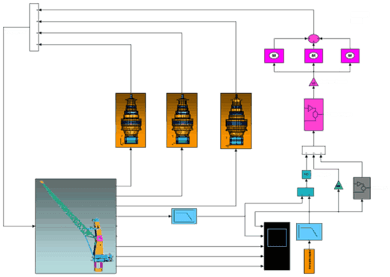
learn morePDF
Validation/Correlation of test and FEA
How is the reliability of FEA simulations guaranteed?
An important function of vibration measurements is the correlation and validation of FEA models. FEA stands for the finite element analysis method and is a very widely used and advanced simulation tool, including in vibration analysis. However, the reliability of the results of an FEA simulation depends very much on the reliability of the input parameters used, the assumptions for boundary and coupling conditions and the excitation forces or excitation mechanisms used. For complex vibration systems in particular, it is advisable to compare the simulation results with real measurement results as part of an FEA validation. By correlating simulation results and measurement results, unknown or only imprecisely known input variables of the FEA simulation can be precisely determined. The result of the FEA validation is a reliable, correlated simulation model that can be used for precise predictions and targeted product optimization.
Free Consultation
Our specialists are always at your disposal to flexibly respond to your respective requirements and wishes.
Dr. Michael Elbs, Managing Director

Building vibrations
Is there a risk of harm to people, machines, or buildings?
Construction work, passing traffic, but also the operation of stationary machines, such as presses, can introduce shocks or vibrations into buildings and thus affect the health and well-being of people, disrupt the function of sensitive production machines or measuring machines and, in extreme cases, lead to building damage. To record and evaluate building vibrations, we carry out vibration measurements for you in accordance with DIN 4150 and are also happy to advise you on the development of remedial measures.



